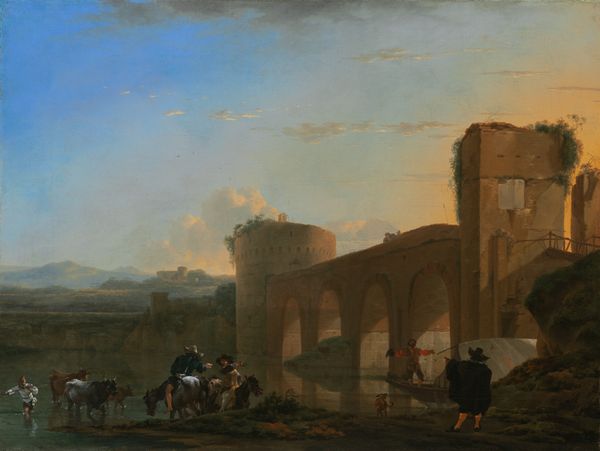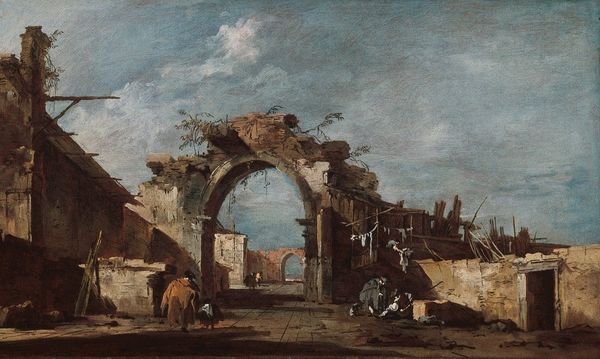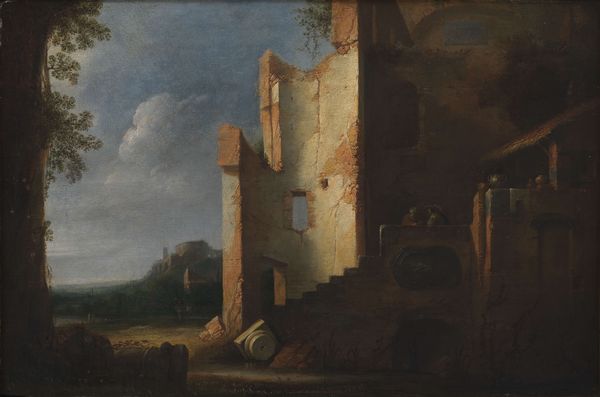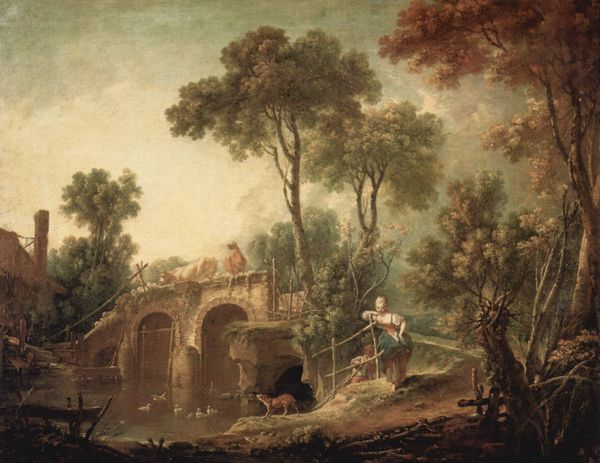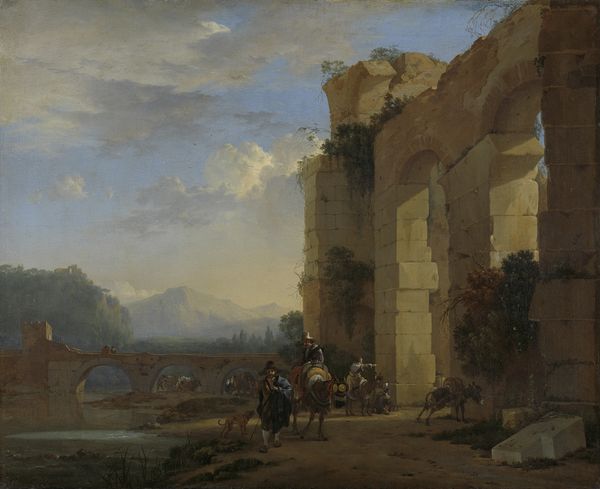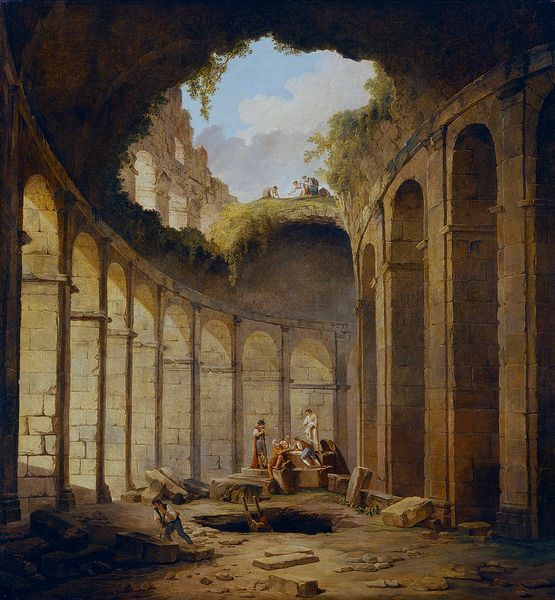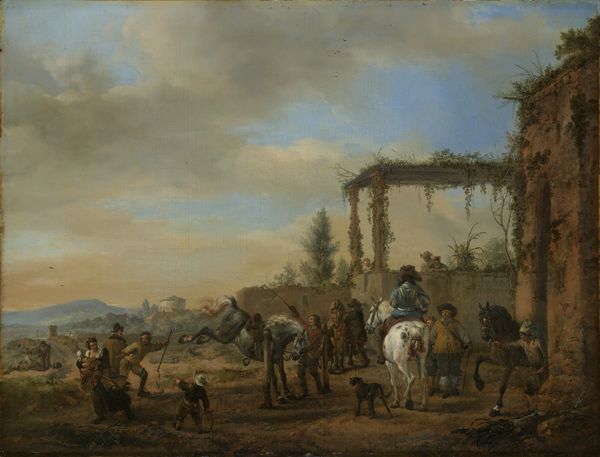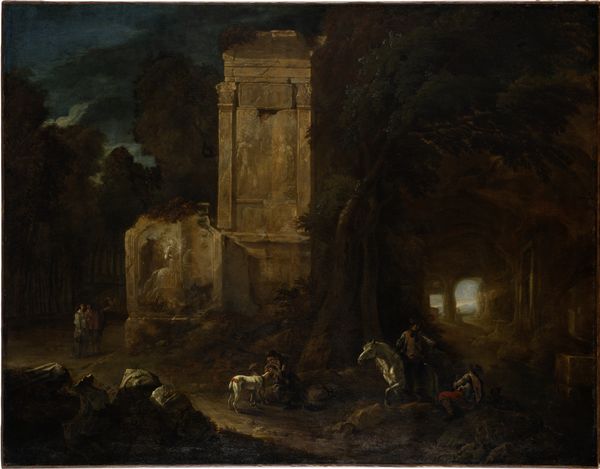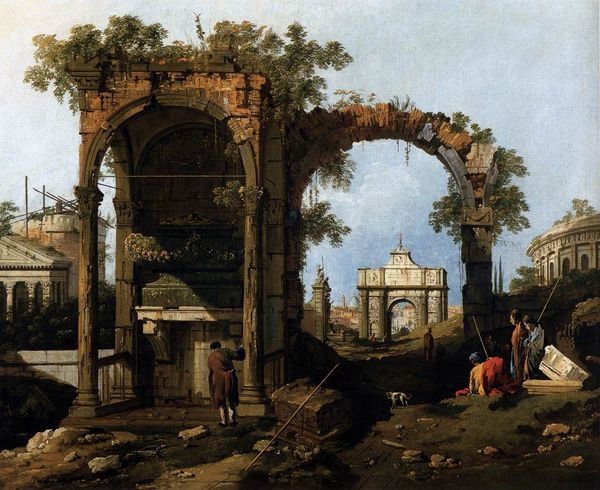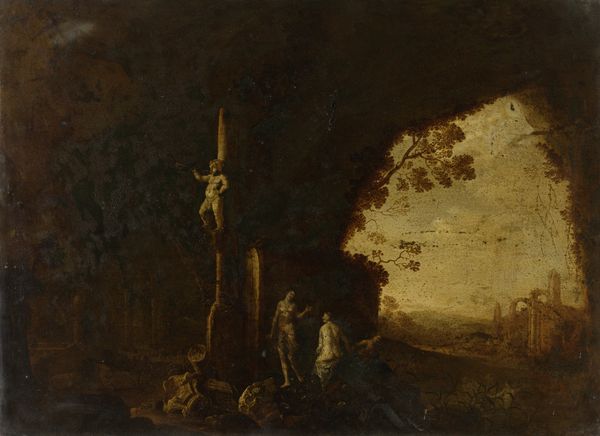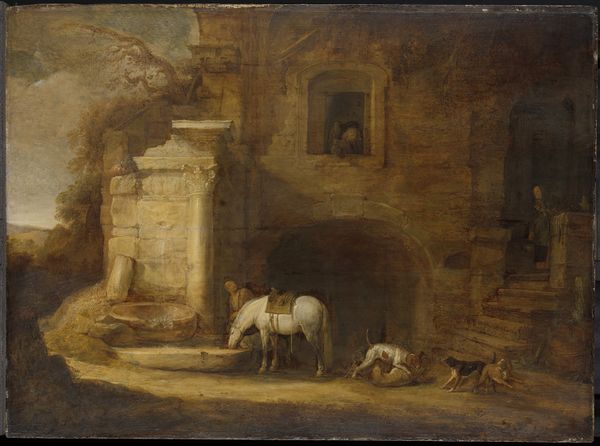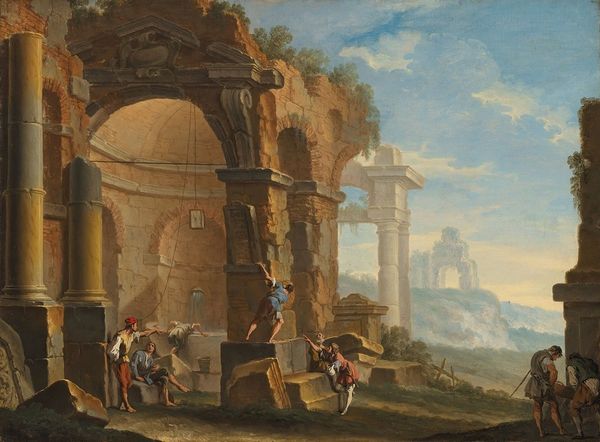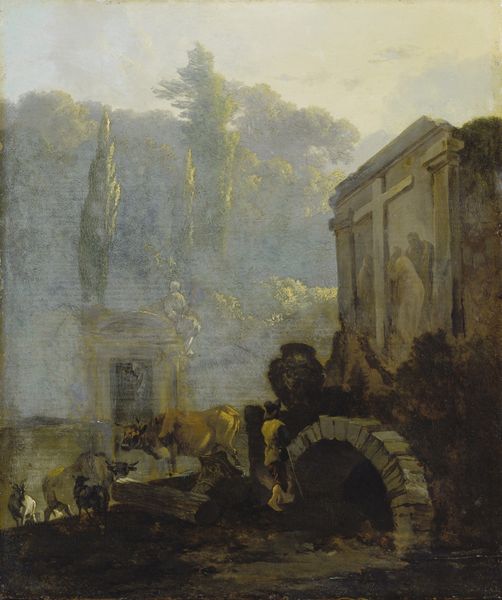
Drovers with Cattle under an Arch of the Colosseum in Rome 1640 - 1652
0:00
0:00
janasselijn
Rijksmuseum
painting, oil-paint
#
baroque
#
painting
#
oil-paint
#
landscape
#
genre-painting
#
history-painting
#
mixed media
#
ruin
Dimensions: height 42 cm, width 45 cm, depth 6 cm
Copyright: Rijks Museum: Open Domain
Curator: This is Jan Asselijn's "Drovers with Cattle under an Arch of the Colosseum in Rome," dating from around 1640 to 1652, a work rendered in oil on canvas. What are your initial thoughts? Editor: A palpable sense of ruin. It's not just physical decay but something more profound, almost allegorical, isn't it? Curator: Indeed. Asselijn structures the composition ingeniously. The arch of the Colosseum frames a landscape, sharply contrasting the solidity of the architecture with the openness beyond. Note the formal tension. Editor: The Colosseum, a potent symbol of Roman power, now shelters cattle drovers. A civilization's collapse made immediate, a shifting of the symbolic order...The animals, the peasants, occupying what was once an imperial stage. The psychological impact is striking. Curator: And consider the painting’s textures. The rough-hewn stones of the Colosseum, rendered with visible brushstrokes, create a tactile quality that contrasts sharply with the smooth sky and distant hills. The juxtaposition accentuates the contrast between near and far. Editor: Those distant hills! Their almost dreamlike quality. They whisper of an idealized past even as we're confronted with the Colosseum’s demise and repurposing. Does the painting suggest history always haunts the present? Curator: It does for me. Through masterful application of pigment and light, the painter forces us to ponder notions of permanence, change, the rise and fall of empires and the relationship between the built environment and the natural world. Editor: It is a profound piece. Asselijn delivers a vivid tableau layered with melancholic symbolism, isn't it? A subtle, emotionally charged exploration of cultural memory and transformation. Curator: Precisely. A testament to Asselijn's talent. Editor: And a fascinating collision of visual symbols from diverse temporal moments.
Comments
No comments
Be the first to comment and join the conversation on the ultimate creative platform.
